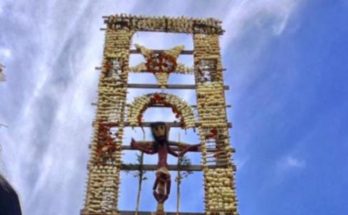By Arturo Morales Tirado
After four centuries, the mixed haciendas of agriculture and livestock, as a productive system in the rural area of the Frontera de Tierra Adentro (the Inland Frontier), dramatically came to an end with a tragic episode, in which the promoters of the agricultural distribution of the hacienda of la Petaca, messrs: Simeón López Ramírez, Cipriano López and Severo Delgado, along with the surveyor, engineer Roque Rubio, were murdered on June 24, 1937. Today, on the main street of the San Miguel community of La Cuadrilla, you can read plaques alluding to these characters and this tragic event.
The origin of the haciendas in New Spain occurred with the arrival of the first viceroy, Don Antonio de Mendoza y Pacheco, aware of the failed experience of the Encomienda system and with the precedent of the Andalusian haciendas. Andalusia was a Spanish region where the activity and production in rural areas were taken with the same importance as those that of cities and towns, such that the mansions and infrastructure in the rural areas were not only monumental but also functional around production.
Haciendas, (from the Latin: facienda «things to be done,» from facere «to do»), were established in America under the rule of the Spanish crown in the 1530s as economic organizations with the administration of the Spanish crown in a trans-oceanic system of large estates for agricultural and livestock production. Also, from the sources of mercury, silver ,and gold around the silver route and later Camino Real de Tierra Adentro (the first road designed and built by Europeans on the continent ), there were also benefit estates in the Reales de Minas or mining communities.
Today, in the municipalities of: Comonfort, Dolores Hidalgo, Guanajuato, San Miguel de Allende, San Diego de la Unión, San Felipe, Dr. Mora, San José Iturbide, and San Luis de la Paz, there are vestiges and infrastructure of about a hundred haciendas. By the way, many are diversified to other types of production, such as the specialized mezcal haciendas; but in general, all of them are mixed production linked to other types of infrastructure, such as sales and cattle haciendas (generally horses, mules, donkeys) and others with private activities such as those for the collection and grinding of grains. Many have places for specific activities of the management of large livestock (cattle) and small livestock (goats, sheep) in the seasonal movement of livestock through pastures of cattle haciendas with extensive lands of more than 10,000 hectares (~25,000 acres), where they required barns (warehouses of ground grains or not), herraderos (farriers), capaderos, etc.
Given this complexity, these economic organizations developed over more than 400 years, generating the mansions and infrastructure of these production centers of the viceroyalty and the first years of republican Mexico. Hundreds of communities of people were also generated who, in one way or another, worked in different ways on these haciendas, such as slaves, laborers, tenants, sharecroppers, and others. Even today, many of these communities have a significant number of indigenous origins. By the way, San Miguel de Allende is the Guanajuato municipality with the largest number of communities of indigenous origin. Many of these retain a descriptive reminder of their specific economic activity, such as La Cuadrilla, El Capadero, El Capaderillo, Corral de Piedras, and others.
In all these centuries, the haciendas transformed, modified, and impacted the time, space, and circumstances (governance, economy, society, culture, and ecology) of the Frontera Tierra Adentro (Inland Frontier). So it is wonderful to have the enormous, tangible cultural heritage surrounding these, together with the legacy of universal heritage of the haciendas. They retain some of the oldest and most complex heritage that evolved from those first forts or outpost prisons (presidios) together with the indigenous communities and their Indian chapels (capillas de Indios). Due to the limited space in this section, I will only mention these local haciendas: Puerto de Nieto, Corral de Piedras de Arriba, Cruz del Palmar, and La Petaca, all of them today are private properties in one way or another.
Around the hacienda main houses, we can still distinguish, observe, and admire the main house with its central patios with porticos-arcades and cobblestone pavement, the monumental hacienda front yard, corrals and smaller corrals, barns, simple waterwheels (norias), animal-driven waterwheels (norias de sangre) still with cobblestones and carousels for the mules that pulled the buckets of water, cisterns (jagüeyes) for small cattle on one side and large cattle on the other. In some, their threshing floors (eras) for threshing grain can still be seen next to the barns (trojes) and aventaderos next to them to separate the grains from their dry branches and foliage. Haciendas de la Frontera de Tierra Adentro, the built testimony of the greatness of our wonderful universal cultural heritage.




